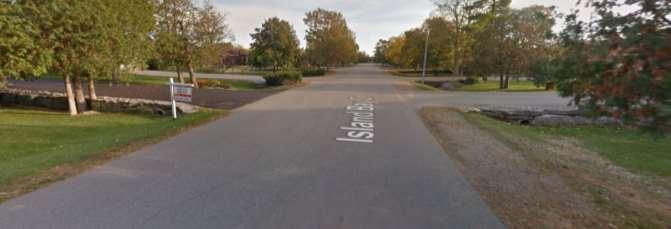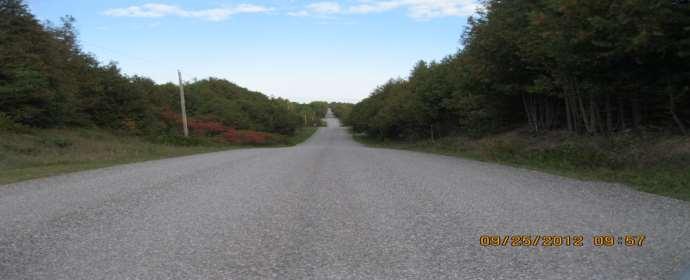Engineering and Corporate Assets: Roads Capital









FT (Wages charged to WWW budget)
FTE charged to WWW budget)
Implementation of Roads Capital Programs are primarily managed in the following two divisions, which includes:
Infrastructure Design & Construction
Supervisor (1)
Senior Engineering Tech (3)
Engineering Tech (3)
Construction Tech (0.5)seasonal 6 month period
Students (2)
Technical Services
Supervisor (1)
Senior Engineering Tech (2)
Engineering Tech (2)
Municipal Drainage Superintendent (1)
Construction Tech (0.5)seasonal 6 month period
Students (3)
In addition, the following Divisions provide support:
Oversees and manages the implementation of private development, which includes plans of subdivision and development of unopen road allowances. Conducts review of and provides approval for capital design on behalf of the Ministry of Environment, Conservation and Parks.
Provides asset management support for roads assets, determines sustainable long-term capital expenditure and funding levels, and develops long-term financial plans and annual capital budgets.






Under O.Reg. 239/02 (Minimum Maintenance Standards), highways fall into classes 1-6 based on speed and volume:
AADT means Annual Average Daily Traffic. It is derived from the total volume of vehicular traffic on the road divided by 365 days
Based on the provincial and the City’s classification systems, the City’s road network is distributed as follows:
The purpose of a Road Needs Study is to provide an overview of the overall condition of the road system and to provide the municipality with a working tool when budgeting and determining which roads to improve and when.
The assessment of the City’s road inventory is done every 5 years, where roads are prioritized based on condition rating, traffic volume and classification by local, collector and arterial status.
• 2016 Roads Needs Assessment was incorporated into the 2017 Asset Management Plan.
• In the Asset Management Plan, useful life by road surface assumes lifecycle management interventions occur.
General Useful Lives for Road Surfaces
Road Surface Type
Roads Needs Study: Without Lifecycle Management
Gravel 10 Years
Hi-Float (LCB) 12 Years
Asphalt (HCB) 20 Years
Asset Management Plan: With Lifecycle Management
10 Years*
15 Years
30 Years
*High-volume gravel roads have a 5-to-7-year lifecycle.
kawarthalakes.ca
• Asset Management Plan was incorporated into the LongTerm Financial Plan (2018-2027).
• Long-Term Financial Plan phases in overall sustainable capital replacement and renewal investment over 20182022.
• Long-Term Financial Plan to be updated in 2019; Asset Management Plan in 2021.
Average Annual Need (Indexation at 2%/Year)
Past Funding and Forecasted Expenditure
Past Funding and Forecasted Expenditure (One-Time 20182020 Gravel Rehabilitation Program Excluded)
In order to keep the good roads good (and off the capital improvements list), they have to be resurfaced and treated regularly before they become significantly distressed.
The Lifecycle Management Program utilizes interventions such as:
- Crack sealing
- Single surface treatment
- Slurry sealing
- Micro resurfacing
-
Asphalt overlays
- Drainage improvements
“Keep the Good Roads Good”
Complete reconstruction of existing roadways to an urban standard, including all removals, trenching, new storm sewer, water main, sanitary sewer construction, followed by the placement of new base material and pavement along with curb and gutter and sidewalk installation.
The program also encompasses the cost for the design , utility relocates and property acquisition.
The resurfacing of arterial roads and urban streets within towns, villages and hamlets with hot mix asphalt pavement to provide safe, assessable, maintainable and sustainable roads.
Projects are prioritized through the asset management plan with a focus on roads associates with high traffic volumes and/or those in a stage of their lifecycle where resurfacing will extend useful life.
The resurfacing of low-volume rural roads involving the pulverization of existing distressed surface treatment followed by the placement of granular material and the application of a double surface treatment, including base repair, ditching and culvert replacement as needed.
Based on the 10-Year Gravel Resurfacing Plan incorporated into the Asset Management Plan.
Summary of 10-Year Gravel Resurfacing Plan (2018-2027)
Environmental Assessment is a planning and decision making process used to promote environmentally responsible decisions.
The Municipal Class Environmental Assessment process has been approved under the Environmental AssessmentAct and it sets out the process that municipalities follow while planning most sewer, water, road, and transit projects.
Projects undertaken by municipalities can vary widely in their environmental impact. Consequently, projects are classified into one of four types:
• Schedule A
• Schedule A+
• Schedule B
• Schedule C
Schedule A
Schedule A projects are limited in scale, have minimal and predictable environmental effects, and usually follow established best practices. Projects include maintenance and normal operational and repair projects.
Schedule A projects are pre-approved and may proceed without further EA consideration.
Schedule A+ projects are also pre-approved but have the potential for local impacts. These projects are generally rehabilitating existing facilities.
There is a requirement to notify those directly impacted by the project to encourage discussion of any issues between the proponent and those impacted.
Schedule B
Schedule B projects have the potential for some environmental effects and consultation with affected public and relevant review agencies is mandatory. These projects are generally improvements or minor expansions to existing facilities. For Schedule B projects, the information gathered during the process is documented in a project file. Anyone can appeal the preferred solution if concerns remain unaddressed at the conclusion of the process.
C projects generally include the construction of new facilities or major expansions to existing facilities and have the potential for significant environmental effects. These projects require notice to the affected public and relevant review agencies and formal public meetings must be held.
For Schedule C projects, all of the information related to identifying the problem, the evaluation of the alternative solutions considered and the selection of the preferred solution is compiled in an Environmental Study Report. This report is then available for public review for 30 days. Anyone can appeal the preferred solution if concerns remain unaddressed at the conclusion of the process.
A detailed listing of the projects included in each type is included in Appendix 1 of the Municipal Class Environmental Assessment book.

